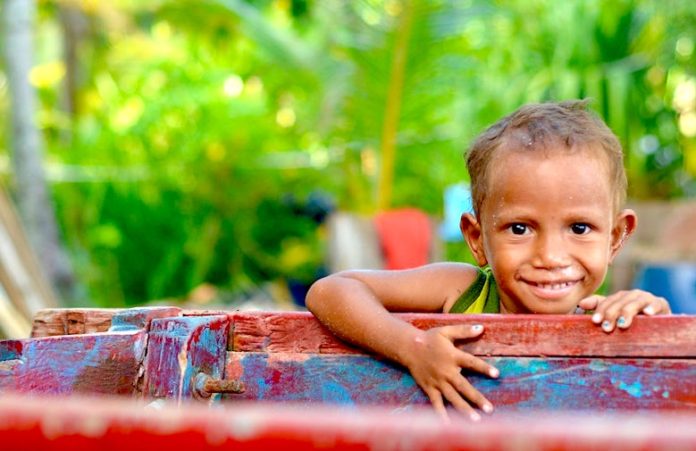 By Mohammad Minhazur Rahman
By Mohammad Minhazur Rahman
Nearly one million Rohingya refugees who escaped repression of the Myanmar junta are hosted in Bangladesh. They were forcefully sent from Myanmar’s North Rakhine State to Cox’s Bazar, Bangladesh’s second-poorest district.
Since August 2017, nearly 744,000 Rohingya refugees have arrived in Bangladesh, creating a humanitarian urgency. The Rohingya refugees have suffered problems related to shelter, food, safety, and healthcare from the very beginning, and now the COVID-19 pandemic has further deteriorated their situation.
As we have seen from examples in other countries, too, refugees are discriminated against and are frequently blamed for wrongs they didn’t commit. In some cases, they have been wrongly accused of disease transmission, and in others, they have been subjugated to mistreatment and inhuman behavior.
The anti-migrant and anti-refugee feelings are not limited to the West anymore. They can be felt in countries like Bangladesh, too. Globally, the increasing tide of populism and the COVID-19 pandemic has created a toxic cocktail. In some cases, the COVID-19 pandemic has been used as an excuse to inflict retribution on refugees as well as on other disadvantaged and marginalized populations. This kind of aggression may take several forms, including preventing or halting movement of asylum seekers, closing camps and borders, and forced repatriations.
Needless to say, the Rohingya refugees in Bangladesh are going through a very challenging phase during the COVID 19 pandemic.
The intense population density of the camps, inadequate sanitation, limited health services and the lack of self-isolation means a high chance of infection in the camps. The pre-existing incidence of ARI indicates that the community offers “favorable conditions” for the transmission of COVID-19, as is the case with many other respiratory diseases, including the common flu and SARS.
The main impact of an outbreak of COVID-19 on the 855,000 Rohingya refugees will be broad transmission through camps and greater than average mortality and morbidity rates in comparison to other affected populations in Bangladesh and elsewhere. Crowded and overpopulated camps and the prohibitions of movement (in areas outside camps) prevents refugees from “isolating” themselves. In fact, the concept of isolation is virtually absent in these camps.
Another significant problem in the camps is the camp residents’ (i.e. refugees’) dependence on the public and frequently overcrowded hygiene facilities. Mechanisms that ensure proper hygiene and sanitation (for instance, bathing establishments, clean water, soap, hand sanitizers) are scarce. Proper hygiene and sanitation is crucial, if not the most effective step, in preventing the spread of COVID-19. The lack of it makes Rohingya refugee camps vulnerable to all sorts of diseases, including COVID-19. Bangladesh’s health system is already hectic, overstretched, and overwhelmed––with no facilities, technical services, or the space available for diagnosing and treating severe cases or handling a large-scale COVID-19 outbreak.
Nearly half of the refugee populations live under the poverty line and receive humanitarian aid. It is estimated that 45% of them have limited or inadequate nutritional intake. This signifies that the overall position of immunity is projected to be less than that of the general population and therefore more likely to be COVID-19. In June, UNICE reported that malnourished Rohingya children are at heightened risk during the pandemic.
In addition, the current camp-wide blockade in telecommunications inhibits the effective dissemination of accurate messages about the current crisis, which are critical for COVID-19 preventative measures and for preventing the dissemination of detrimental and misleading information.
The spread of rumors and misperception of COVID-19 in the refugee camps is incredibly harmful.
The spread of rumors and misperception of COVID-19 in the refugee camps is incredibly harmful. Rumors such as COVID-19 patients will be executed are detrimental for peace and order, obviously, but they also encourage people to live with the disease and refrain from seeking medical help. In that sense, it is important to counter rumors, misinformation, and misconceptions urgently.
Rumors about COVID-19, if unaddressed, could have a negative effect not only on social cohesion, both between Rohingya refugees and host communities; but this could also lead to increased virus transmission. If a Rohingya refugee thinks he or she needs to hide the disease, either out of fear of stigma or due to hesitation to face health care professionals, this will have a devastating impact on containing the virus, within the refugee camps, but also outside. When patients are willing to manage a disease themselves, it also tells a lot about the mistrust and distrust they have in the healthcare system.
Maintaining basic hygiene, such as regular handwashing, remains a challenge in resource-deprived refugee camps. However, there are other problems, too. Issues such as complexities of social distancing, loneliness, anxiety and depression, the fear of stigmatization, and challenges in providing care for patients already affected with COVID-19 cannot be overlooked.
The overcrowded camps with difficult physical, environmental, and psychological conditions are going to be a challenge in containing the virus in these camps. Rohingya refugee camps have high population densities and, thereby, COVID-19 is more likely to spread rapidly in these camps. The total population density is around 40,000 people per square kilometer, which is far higher than most refugee camps worldwide. Maintaining physical distance and self-isolation in these camps is a huge challenge. Each of the 187,530 families of the Rohingya camps has 4.6 members on average, most of who live in one single room per household. The high population density and the lack of COVID-19 awareness among the campers and the lack of access to water, hygiene, and sanitation make immediate measures imperative to prevent the contamination of large numbers of Rohingya.
Existing health conditions, malnutrition, inadequate room protection, and weak hygiene services in refugee camps make Rohingya refugees an ideal target of COVID-19. It’s time the Bangladeshi government and aid agencies focus on the efficient production of low-cost ventilators. Work must be done also to improve the quality of life of the Rohingya refugees, for instance, by providing nutritional support and mental health care.
Work must be done also to improve the quality of life of the Rohingya refugees.
If the pandemic hits the refugee camps, the lack of intensive care is certainly going to be an issue, and it needs to be addressed already now. Ensuring regular oxygen supply and the procurement of adequate PPEs for health professionals is also important. Hiring an adequate number of health professionals to handle a possible emergency situation is also crucial as travel restrictions pose a challenge to people’s movement. At this hour of crisis, protecting critical supply chains, including oxygen and medicines, is also very important.
The Rohingya refugees have already suffered a lot in their home country, which they were forced to flee, and it’s our duty to make sure that this pandemic doesn’t hit them hard.
(Mohammad Minhazur Rahman studies law at the Jahangirnagar University, Dhaka, Bangladesh. He is interested in international law and aspires to work in the development sector. He has also been volunteering in different non-government organizations (NGOs) in Bangladesh).











